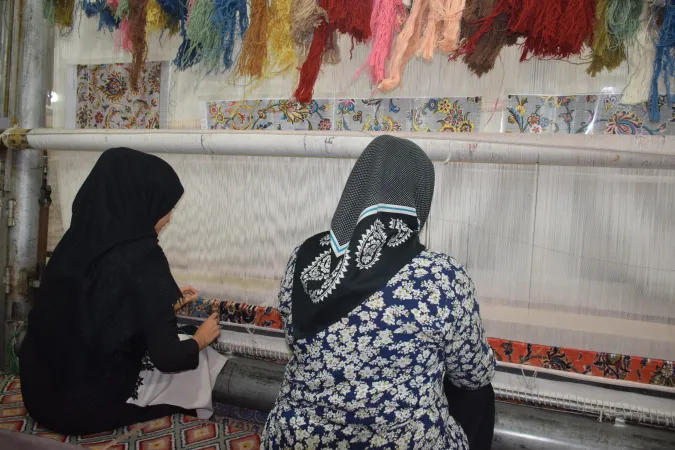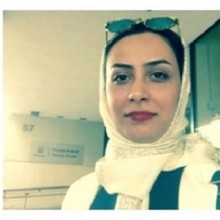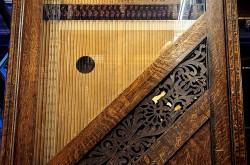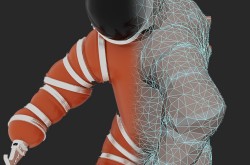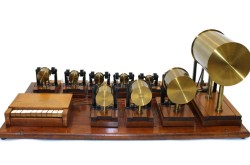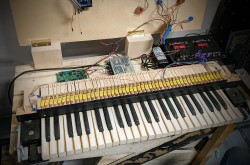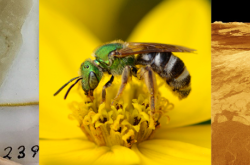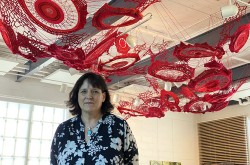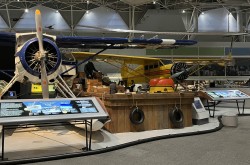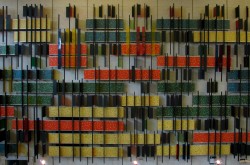Unseen and unrecognized: Women’s key role in the history of computer memories

In 2017, I had the honour of travelling to Iran — the country that's world famous for its hand-woven carpets — to study women’s traditional practises of Persian carpet weaving. I visited collective and home carpet-weaving workshops in Kashan, where I interviewed local women who were involved in carpet weaving. Frames of astonishing designs, mixed with attractive colours using traditional tools, have been fixed in my memory.
Traditional tools used for carpet weaving, ToranjMehrab carpet weaving workshop, Kashan, Iran. Photo: Ghazaleh Jerban, 2017.
The magic of local women’s hands, who patiently add knot after knot to realize the abstract beauty through their skilful fingers, is not something that can easily be forgotten.
Having such images in my mind, I vividly remember the first time that I saw the core memory plane (photo below), in the Ingenium Museums artifact storage facility next to the Canada Science and Technology Museum. The intricacy of the tangled wires of this memory unit which belonged to a large main frame computer immediately brought me back to the carpet workshops - it evoked an image of a carpet loom in my mind!
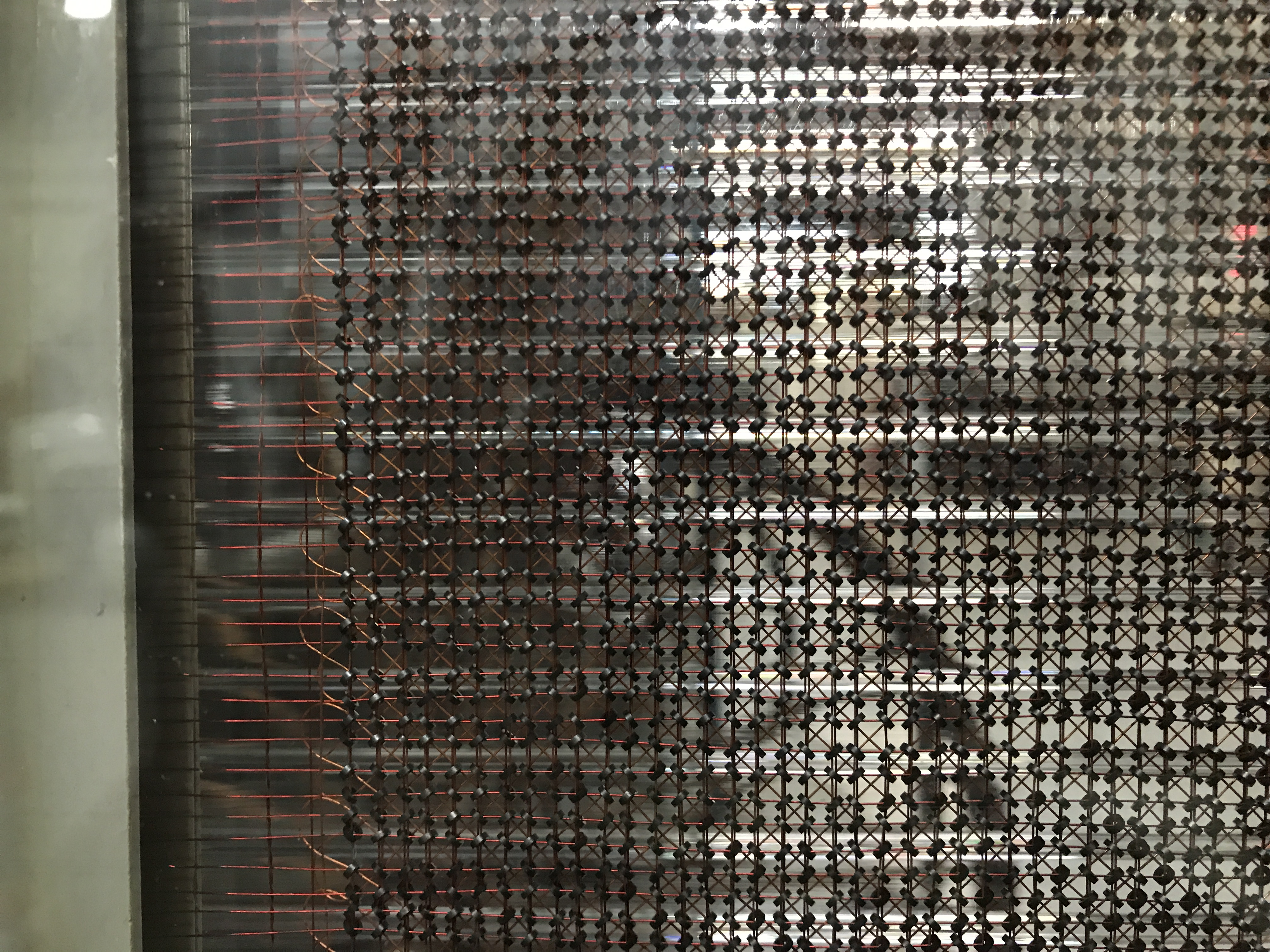
Core memory plane, SAGE air defense computer. Artifact no. 1983.0011.001
At that moment, I had no idea what the object in the warehouse was, what function it had delivered, or how it was created. I recall my supervisor at Ingenium, Anna Adamek, who was giving me a tour of the warehouse, talking about the artifact. Her voice floated around me as I was turning around the artifact, then sitting in front of it to have a better look. I was hearing words like “computer,” “memory,” and “IBM.” But my attention snapped back to her when she said, “… may be woven by hand!”
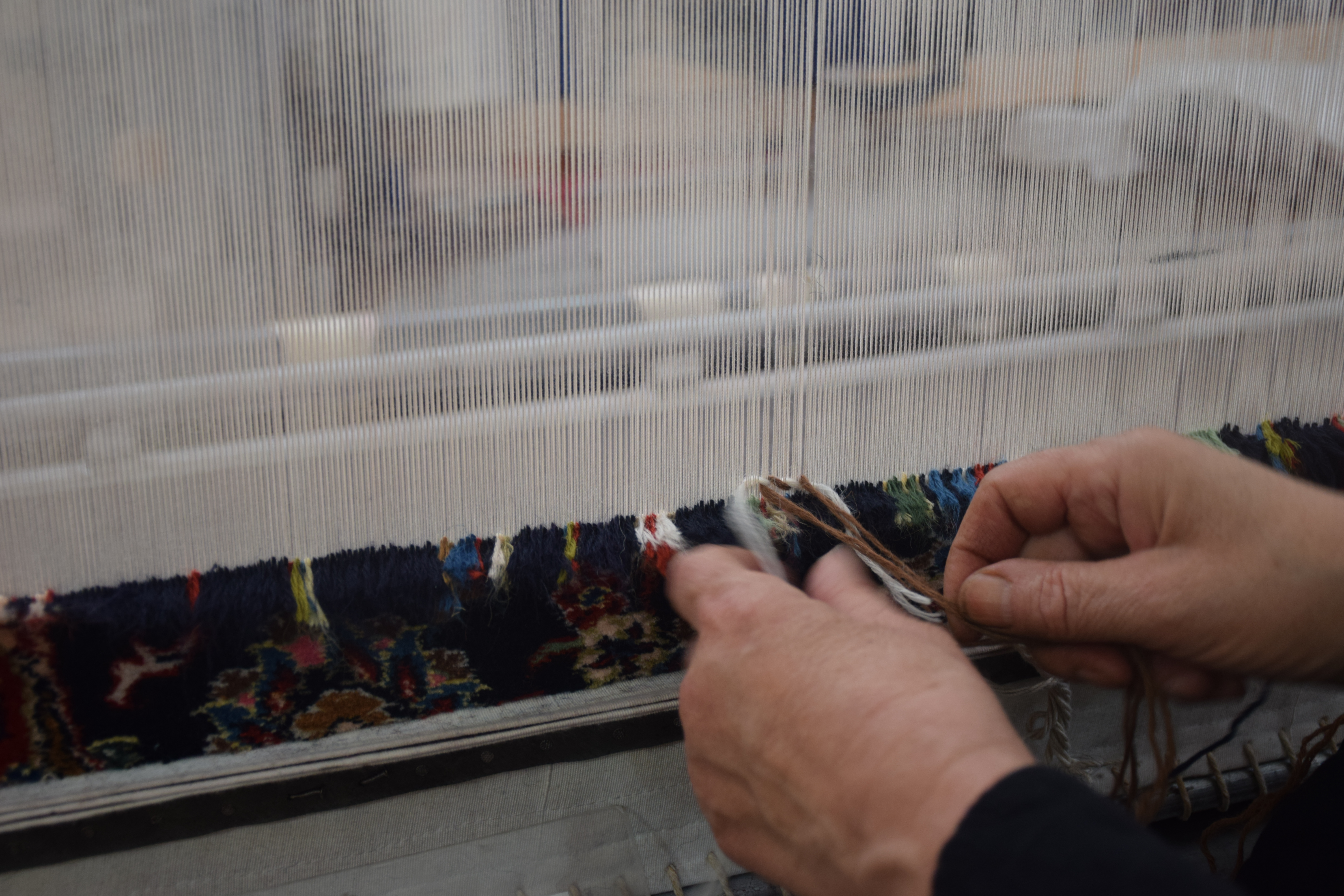
A close-up of tying knots during the weaving process, ToranjMehrab carpet weaving workshop, Kashan, Iran.
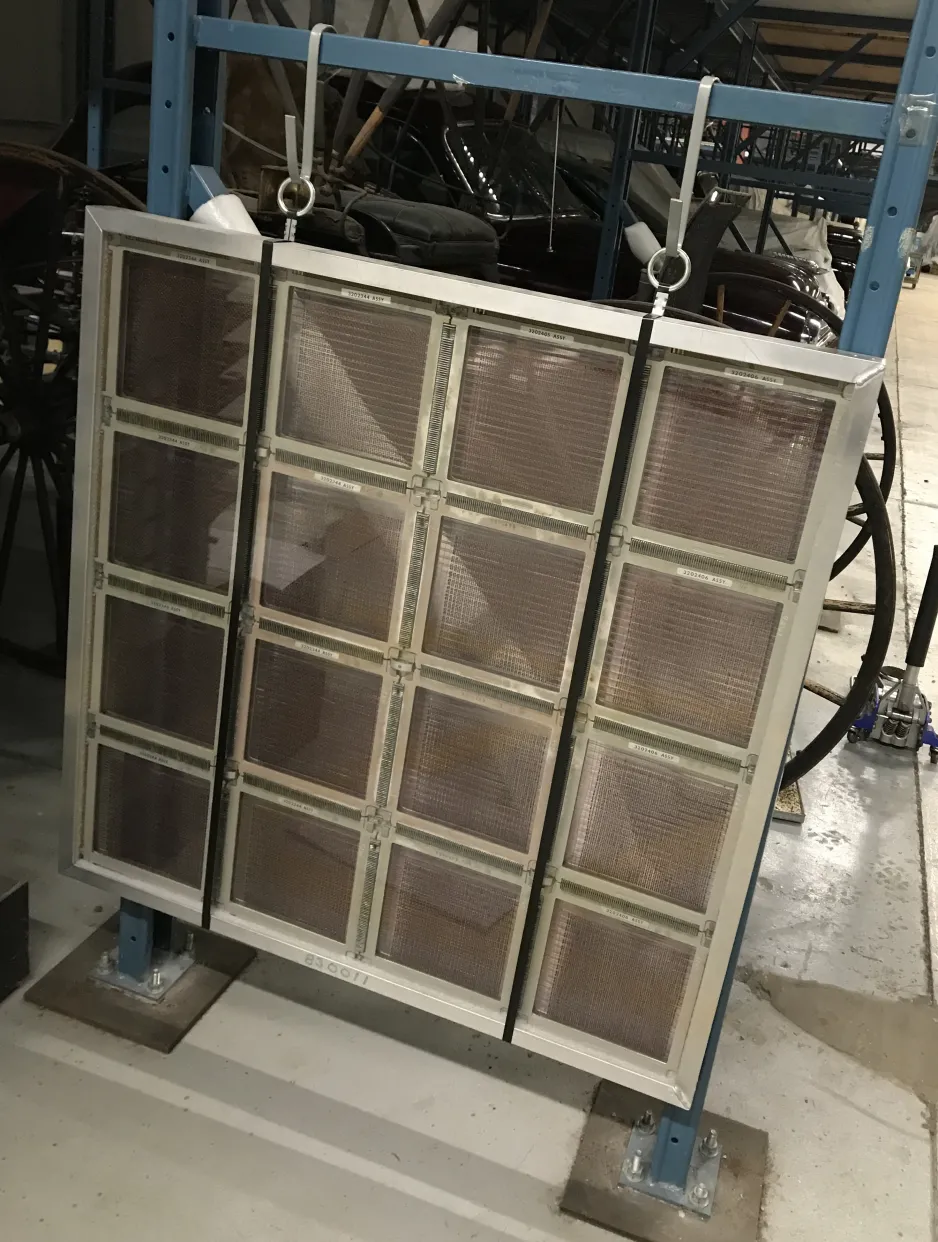
SAGE Core Memory
This core memory plane is from the Semi-Automatic Ground Environment air defense system (SAGE AN-FSQ-7) that was operational at Canadian Forces Base North Bay from 1963 to 1983.
It was manufactured by IBM about 1960 and acquired by the museum from the Department of National Defence in October 1983.
Ingenium Museums Collection On-Line Catalogue:
The First Core Memory Plane
The first core memory plane was from Project Whirlwind (Lincoln Laboratory, MIT) in 1953, whose development paved the way for the SAGE system.
Core memory plane remained the leading form of computer memory into the 1970s.

Hilda Carpenter - Laboratory Assistant
As I researched further, I learned that the first core memory plane was hand woven by Hilda G. Carpenter, a laboratory assistant on the project who once appeared as a model in an article on core memory production —in a 1956 issue of the journal, Electronics (photo at right). With the help of Sylvie Bertrand, I was able to find the journal in the Ingenium Museum's library.
I found it so frustrating that despite Hilda G. Carpenter’s highly valuable contribution, searching her name on the web does not yield any result other than census and obituary records; not even a Wikipedia page!
Struggling to understand Carpenter’s absence from the literature, I realized that the situation was more serious than what it seemed to be. In fact, it was not only one woman who had a major role in the development of the first core memory plane whose contribution was neglected. Rather, it was the entire contribution of women to core memory production that was missing in the existing literature!
In the photo (top, right) from the article “Vacuum and Vibration Speed Assembly of Core Memory” Hilda Carpenter is seen pouring ferrite cores. Unfortunately, her name is not mentioned in the article.
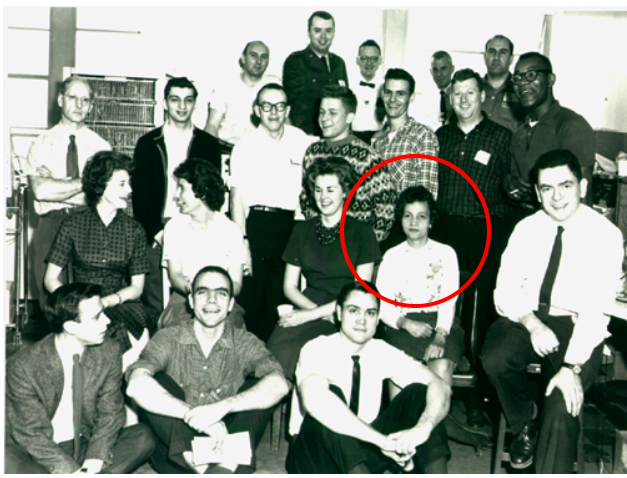
A photograph of Hilda Carpenter and the development team of the LINC (Laboratory Instrument Computer) minicomputer, ca. 1962.

Ferrite-core memory. From the article Vacuum and Vibration Speed Assembly of Core Memory, by A.Guditz and L. B. Smith, Electronics 29, no. 2, February 1956, CSTM Library.
Unveiling the Hidden Contributions of Women
In 1953, the Lincoln Laboratory contracted IBM to design the Whirlwind II. Core memory’s superior properties compared with other memory systems contributed to the sales success of IBM in the mid-50s. [1]
Despite its success, core memory production remained slow, intricate, and labour-intensive compared with other computer components. In 1953, a core memory plane required one to two technician-weeks of tedious labour; another source says about 40 hours. [2]
There were various attempts to mechanize the process and to produce machine-woven core memory; however, they were unsuccessful. Ultimately, IBM outsourced core memory production to Japan and Taiwan in 1965, where highly-skilled women from the textile industry were hired to weave the memories by hand. [3]
Unveiling the hidden contribution of women in the perspective of core memory production, as an example in the context of the feminist theory of dualism, helps to question the assumed separation between the cognitive work of engineers and the manual labour of weavers [4: Making Core Memory]. One aspect of the artifact is highly valued, associated with masculine, innovative, and high-status knowledge; the other aspect is hidden from the public eye, unrecognized, and mainly labeled as feminine, menial, and low status work.
In other words, the unacknowledged work that went into weaving core memories helps to shed light on dualities such as mind versus body, and scientific versus traditional to examine how these dichotomies shape our understanding of innovative and creative work.
Moreover, the example falls neatly under the important theme of “invisible work” that is discussed by feminist scholars, according to which the division of social roles into masculine and feminine, and into public and private, relegates certain types of work to the realm of “feminine” labour. Much of this work is domestic and remains unrecognized or undervalued, even though it is essential to the operation of families, firms, and in this case, to sending man to the moon! [5]
In fact, there was a similar process behind the production of the Apollo space navigation program, where NASA hired highly-skilled women textile workers to weave rope memory for space navigation systems. As David Mindell writes, in his book, Digital Apollo, “NASA was well aware that the success of its flights depended on the fine, accurate motions of these women’s fingers.” [6]
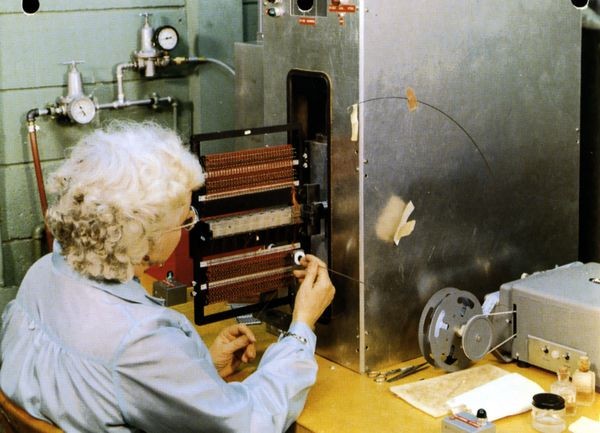
Apollo Guidance Computer rope memory weaving. NASA Engineers had nicknamed the piece “LOL Memory” after the Little Old Ladies who carefully wove the memory.
Footnotes:
[1] Stephen Monteiro, The Fabric of Interface: Mobile Media, Design, and Gender, Cambridge, Massachusetts; London, England: The MIT Press, 2017, p. 47.
[2] Ibid, p. 43.
[3] Ibid, p. 47.
[4] Daniela K. Rosner, Samantha Shorey, Brock Craft, Helen Remick, Making Core Memory: Design Inquiry into Gendered Legacies of Engineering and Craftwork, 2018 CHI Conference on Human Factors in Computing System Paper No. 531.
[5] See generally, Dan L. Burk, in Feminism and Dualism in Intellectual Property, 15:2 Journal of Gender, Social Policy & the Law. p. 183.
[6] David Mindell, Digital Apollo, MIT Press, 2008, p. 155.
Additional Resources:
Traditional skills of carpet weaving in Kashan, UNESCO, Inscribed in 2010 on the Representative List of the Intangible Cultural Heritage of Humanity
Whirlwind: Preparing the Way for SAGE, Computer History Museum, Mountain View, California.
Acknowledgements:
Many thanks to the Ingenium-University of Ottawa Fellowship in Gender, Science and Technology, to Anna Adamek for her assistance, Sonia Mendes and Paul Murray for their edits, Michel Labrecque for translation and page design, and the Computer History Museum in Mountain View, Ca. for use of the photos.
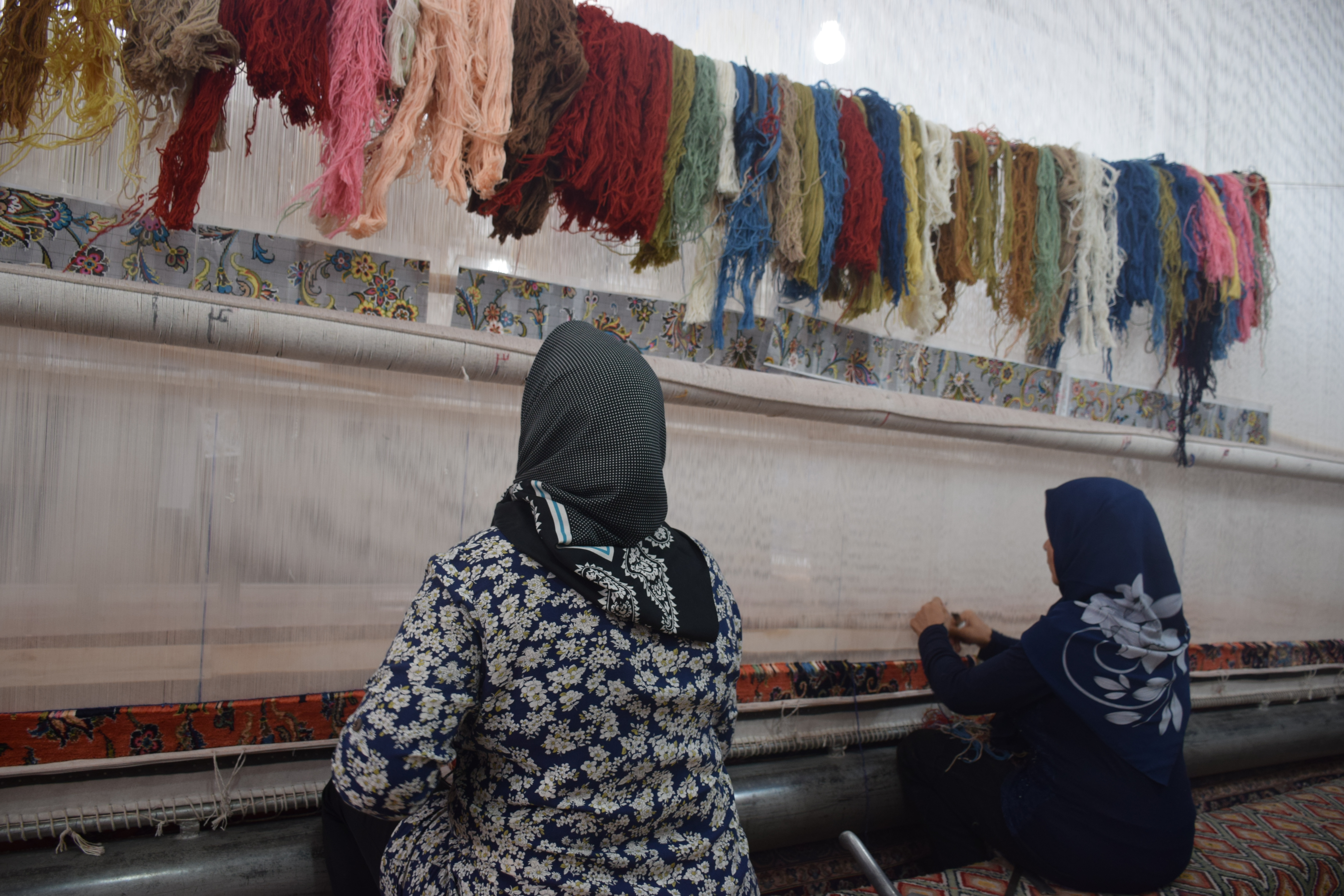
ToranjMehrab, Kashan, Iran.


